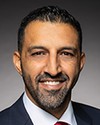Thank you for that.
I fully understand that this falls under the Department of Finance, but I hope that Natural Resources Canada will be consulted on the implementation of the tax credit. I think you will find that, in the specific context of Quebec, what you are asking for is practically unworkable. I will spare you all the explanations about the fact that Quebec has different rates for businesses and individuals.
I want to bring something else to your attention. According to the budget, for a project to be eligible for the tax credit, at least 10% of the workers have to be from the red seal program. I don't see how Hydro‑Québec, which already has expertise, could separate its projects to identify the ones where red seal apprentices make up at least 10% of the workforce. I'm sure you know where I stand, but this intervention in an area of provincial jurisdiction makes no sense. It's micromanaging.
If the goal of the clean electricity investment tax credits is to generate more electricity, that becomes a barrier. Could you comment on that?





